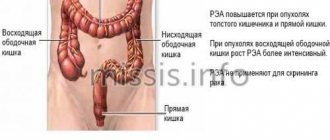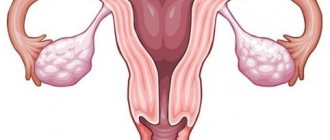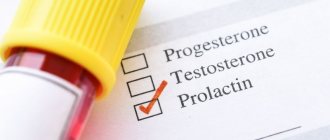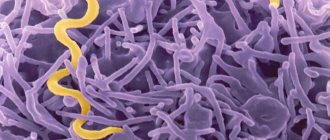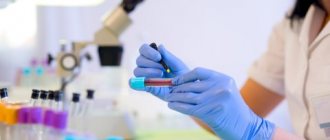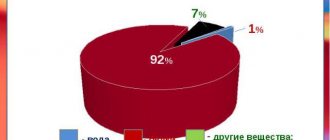Detailed description of the study
Minerals are necessary to maintain normal functioning of the body. They do not provide energy, but ensure the normal course of metabolic processes, being part of enzymes, transport proteins (including hemoglobin), ensuring the strength of teeth and bones, the normal functioning of the nervous system, and the functioning of muscles and the heart.
Mineral metabolism analysis is a comprehensive study that identifies excess or deficiency of minerals and evaluates the usefulness of metabolism. Metabolism should be understood as a combination of processes of transfer, absorption, secretion and assimilation of substances that are present in the body in the form of inorganic compounds. Even if you get enough minerals from your diet, malabsorption can occur at all levels, from intestinal absorption to cellular uptake.
Microelements essential for human life can be divided into groups listed below. It is important to understand that trace elements are needed by the body in very small quantities - in high doses they are toxic.
- Structural elements: calcium, magnesium, sodium, potassium, phosphorus.
- Essential (vital) elements: iron, copper, zinc, cobalt, chromium, molybdenum, nickel, selenium, manganese, arsenic, lithium.
- Conditionally necessary element: boron.
- Other important elements: cadmium, lead, aluminum.
- Ultramicroelements: beryllium, mercury, antimony.
Urine is a biological fluid that is formed in the kidneys when blood is filtered through them. The end products of metabolism, water, salts and minerals, as well as toxic substances are removed from the body with urine. In case of pathologies of internal organs (kidneys, liver, heart, digestive system, endocrine glands, etc.), a change occurs in the chemical composition of the blood and, accordingly, the composition of urine. The mineral molecules are small enough to pass through the kidney filter. A chemical analysis of urine allows us to identify even minor disturbances in metabolic processes in the body, including mineral ones.
The study includes analysis of 23 elements involved in mineral metabolism.
Iron. It is part of hemoglobin, allowing the transfer of oxygen and carbon dioxide in the blood. Iron is also part of myoglobin, a hemoglobin-like protein found in muscles and the heart that stores oxygen, creating a reserve. In the blood and some organs there is a similar “reservoir”, ferritin - an iron-protein complex that contains this metal in reserve form. If there is not enough iron in the body, ferritin will ensure its additional supply into the blood.
Copper. Part of the enzymes that ensure cellular respiration. Cytochrome c oxidase transfers electrons in the respiratory chain to produce energy, and superoxide dismutase neutralizes toxic reactive oxygen species.
Zinc. This metal is necessary for the synthesis of growth hormones: insulin, somatotropin growth hormone, testosterone. It is part of the enzyme alcohol dehydrogenase, which breaks down alcohol, and is also necessary for the absorption and use of the most powerful antioxidant - vitamin E. Zinc is especially important for the health of men: only with it is possible the production of sperm and most male hormones. In addition, the health of the prostate gland depends on it.
Cobalt. It is part of vitamin B12 (cobalamin), which is necessary for DNA synthesis and normal hematopoiesis - its deficiency can cause anemia. It also provides protection and maintenance of the viability of nerve cells and the detoxification function of the liver.
Chromium. It is part of the gastric enzyme trypsin, which breaks down proteins. It also takes part in the metabolism of carbohydrates and lipids. Its deficiency can lead to increased blood cholesterol levels.
Molybdenum. It is part of the enzymes involved in tissue respiration and the metabolism of uric acid nitrogen, which, if disturbed, can cause gout. Enhances the effect of antioxidants (vitamins C and E), supports the activity of the immune system.
Nickel. Strengthens the effect of insulin on the body's cells, preventing excessive increases in blood sugar levels. Enhances the effectiveness of ascorbic acid and ensures the functioning of enzymes involved in the neutralization of toxic substances.
Selenium. It itself is an antioxidant, since it protects cells from the action of reactive oxygen species - one of the causes of aging of the body. The authoritative medical journal Lancet reports that it showed significant anticancer activity against tumors of the rectum, colon, prostate, and lung, overall reducing cancer mortality by 39%. Selenium has an antiallergic effect, improves tissue healing, and supports the functioning of the cardiovascular and immune systems.
Manganese. A trace element important for hematopoiesis, development and maintenance of the health of the gonads.
Arsenic. The body needs it in very small doses and is considered an ultramicroelement. Participates in hematopoiesis and maintaining immunity. It also promotes the growth and strengthening of bones in childhood and adolescence.
Lithium. Plays a very important role in the functioning of the nervous system, reducing its excitability. Lithium preparations are used in psychiatry and neurology to treat epilepsy. Takes part in the metabolism of carbohydrates and fats, has mild antiallergic properties.
Salt drug test
Blood test
Venous blood is used for the study.
A blood test is the most accurate test. There are two ways to carry it out: a quarterly test for antibodies, and a chemical-toxicological test for toxins. The first method is based on the method of detecting antibodies in the blood. Antibodies are produced after the drug enters the blood plasma. The technique is not suitable for testing a person who is currently under the effects of a drug. The quarterly method is not carried out if the person used the drug 1-2 days ago. The reason is that it takes at least 24-48 hours for antibodies to form.
A drug is a collection of low-molecular compounds that lack immunogenic activity. This means that the body does not produce antibodies at the “speed” itself. Complex processes occur in the body that convert drugs into antigens. Antibodies are produced against the antigen, which are determined by the test.
Antibodies remain in the blood for 2-4 months after taking the “salt”. Therefore, the quarterly method can boast of information content and reliability of the result.
Chemical toxicological tests (CTT) are less accurate, but easier to use. They will detect the presence or absence of the drug in the blood plasma. The analysis shows the type of drug and its concentration level. It takes a long time - the results are ready after 8-10 days.
All blood test options require a visit to a medical facility, where a person’s blood is drawn from a vein.
Biological fluid is collected in the treatment room in accordance with sanitary requirements. The procedure is carried out by a doctor who follows the rules of asepsis. It is mandatory to use rubber gloves and treat the puncture site and devices with antiseptic agents.
Saliva analysis
Saliva testing is a simple but not always accurate method. There are three types of saliva testing. Immunochromatographic analysis is an express diagnosis, a simple and fast option. It shows only the presence or absence of a substance in the body
Chemical-toxicological - requires additional medical equipment and is carried out in a hospital. Biomaterial (saliva) is examined in laboratory conditions. This is a qualitative method, not just a quantitative one. It gives not only a positive or negative result, but also indicates the concentration of the substance, period of use, etc. The hardware method is the most accurate and labor-intensive.
Samples are prepared for testing as follows. 10 ml of saliva is collected in a clean, dry plastic or glass container. There may be air bubbles in the saliva; it is important to remove them with a pipette. Air prevents saliva from passing through the absorbents of the dough.
Hair drug test
Hair follicles have an individual blood supply system. The narcotic substance, entering the body, accumulates in all tissues. A hair grows by 1-1.3 cm in 30 days. In this period, information about the substance used is stored. A hair test will allow you to determine what a person consumed 1-3 months ago. Such a study provides information about whether the drug was taken once or continuously.
If you take a hair 3 cm long and cut it into three equal parts, then the part that is closest to the root carries information about all the substances that a person has taken over the past month. The second segment is about substances that entered the body over the previous month. The third segment will talk about substances taken three months ago. If you take a hair 3 cm long and cut it into three equal parts, then the part that is closest to the root carries information about all the substances that a person has taken over the past month. The second segment is about substances that entered the body over the previous month. The third segment will talk about substances taken three months ago.
Kantuev O.I. METHODS FOR DIAGNOSIS OF DRUG DEPENDENCE
References
1. Seregina I. F., Lanskaya S. Yu., Okina O. I., Bolshov M. A., Lyapunov S. M., Chugunova O. L., Foktova A. S. Determination of chemical elements in biological fluids and diagnostic substrates of children using inductively coupled plasma mass spectrometry / Journal of Analytical Chemistry, 2010, Vol. 65, No. 9, p. 986-994. 2. Skalny A.V. Chemical elements in human physiology and ecology. – M.: Publishing house “Onyx 21st century”: Mir, 2004, 216 p. 3. Singh N, Gupta VK, Kumar A, Sharma B. Synergistic Effects of Heavy Metals and Pesticides in Living Systems. / Front Chem. 2017;5:70. 4. Chen SX, Wiseman CL, Chakravartty D, Cole DC. Metal Concentrations in Newcomer Women and Environmental Exposures: A Scoping Review. / Int J Environ Res Public Health. 2021. 8;14(3) 5. Rayman MP. Selenium and human health. Lancet. 2012;379(9822):1256-1268. doi:10.1016/S0140-6736(11)61452-9
What can you see in a daily urine test for salt?
Let's look at the most typical results. Please remember: the transcript below is for informational purposes only and in no way replaces medical advice.
Urats
Urates are a precipitate of uric acid salts. If a general urine test for salt reveals urates, then the most likely diagnosis is one of the following: fever, uric acid diathesis, gout or leukemia. The presence of urates may also indicate poor nutrition, in which protein foods and strong tea are consumed in excess. In addition, a similar result is typical for people experiencing excessive physical activity, as well as dehydration or fever.
If no significant diseases are identified, a diet consisting of fruits and vegetables, eggs, dairy products and cereals will help reduce a large amount of urate. It is very important to drink at least two and a half liters of liquid. Alkaline mineral waters (for example, Essentuki or Borjomi) will be especially useful drinks. The body's need for calcium, magnesium, zinc, and vitamins A and B increases.
Phosphates
The appearance of phosphates in test results may indicate cystitis, Fanconi syndrome or hyperparathyroidism, but in some cases it manifests itself when the acidity of urine decreases after a heavy meal in healthy people. If phosphates are present, it is recommended to exclude or at least limit the consumption of foods rich in calcium and vitamin D: fatty fish and fish liver, eggs, high-fat dairy products.
Decoding
You already know that salt crystals in a child’s urine can be detected in different situations, and it is not always worth immediately thinking about pathology. Are there clear boundaries of the norm for them? In fact, these urine elements, due to the variability of their appearance in biomaterial samples, do not have serious significance for diagnosis, although they can be considered as indicators of the risk of developing kidney stones or dysmetabolic nephropathy.
When assessing research results, pediatricians are guided by the table:
| Type of salt | Norm | Pathology |
| Urates, oxalates, phosphates | Absent or single (or up to “+”) | Found in large numbers (either from the border of “++” and ↑) |
| Other types of crystals | Not identified | Available in sample |
Interpretation of salt transport studies is carried out on an individual basis. Standards for children:
| Index | Material | Permissible limits of values, mmol |
| Calcium | TO | 1,89-2,59 |
| M | ↓4 mg/kg/day | |
| Phosphorus | TO | 1,53-2,45 |
| M | 13-42 | |
| Uric acid | TO | 119-327 |
| M | 1200-5900 | |
| pH | M | 5,0-6,5 |
| Oxalates | M | ↓0.57 mg/kg/day |
“M” in the table stands for urine, “K” for blood. Abbreviations are given for ease of use. Limits may vary depending on the procedures and reagents implemented in specific laboratories.
